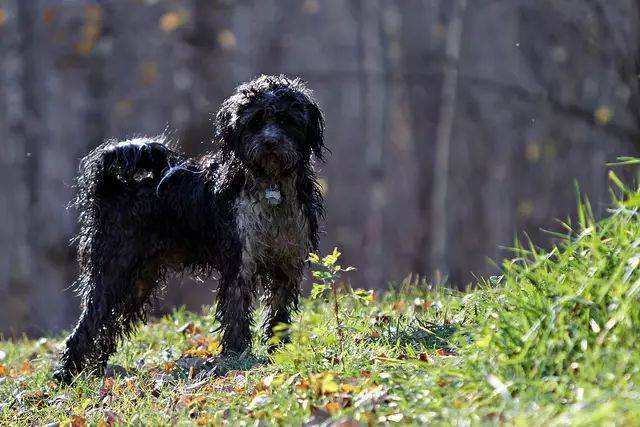Portuguese Water Dog
IUCN
LCBasic Information
Scientific classification
- name:Portuguese Water Dog
- Scientific Name:Coad Agua
- Outline:Carnivora
- Family:Canidae
Vital signs
- length:20-23cm
- Weight:16-27kg
- lifetime:10-14 year
Feature
The Portuguese Water Dog can not only retrieve prey, but also help fishermen work, guard fishing boats, and shuttle between different fishing boats, acting as a liaison.
Distribution and Habitat
Native to Portugal
Appearance
The head is particularly large, well proportioned and very broad on top. The expression is firm, sharp and focused. The eyes are medium in size, set wide apart and slightly slanted. They are round, neither protruding nor sunken. They are black or various shades of brown, the darker the better. The eye rims are well pigmented, black in black, black and white or white dogs, and brown in tan dogs. The nictitating membranes are dark and not visible. The ears are set above the eyes, with thin heart-shaped auricles, lying close to the head except for a slight flare at the back. The skull, in profile, is slightly longer than the muzzle, with the posterior part more curved than the anterior part. When viewed from the front, the skull is very broad and hemispherical, slightly concave in the middle. The forehead is prominent with a wrinkle in the middle extending from the stop to the occipital bone for about two-thirds of its length. The occipital bone is very well defined. The stop is very well
Details
The Portuguese Water Dog is native to the coastal areas of Portugal and has sailed with fishermen to the vicinity of Iceland. The Portuguese Water Dog is an excellent swimmer and diver, with special talents and perseverance, helping his owner to find lost fishing gear in the sea, drive fish, and pass messages between small boats or between small boats and land.

Some people believe that the history of the Portuguese Water Dog can be traced back to 700 BC, when people living in the steppes of Central Asia raised cattle, sheep, camels or horses. They raised dogs to manage their herds, and due to isolation from the outside world, these dogs developed into a certain type. One theory is that these dogs were captured by the Berbers and brought to Morocco via North Africa, and their descendants, the Moors, brought water dogs to Portugal in the 8th century. Another theory is that some dogs followed the Goths out of the Asian steppes, one group went west and became the German poodles; another group went south, and in 400 AD, the Goths invaded Spain and Portugal, and the dogs arrived at their homeland today, isolated on the rugged coast of southern Portugal. In 1930, the Portuguese Kennel Club recognized this breed and listed it as a working dog. In 1954, a small number of water dogs were shipped from Portugal to the UK. It was not until 1983 that the American Kennel Club recognized it.
It is reported that Obama chose the Portuguese Water Dog on the advice of his good friend, Senator Edward Kennedy. The late Kennedy had three Portuguese Water Dogs during his lifetime, and he told the Obamas that the Portuguese Water Dog was very suitable to be the "First Dog of the White House." In the end, the Obamas' dog came from the same kennel as the Kennedys' dog. In addition, the Obamas chose the Portuguese Water Dog because their eldest daughter Malia had allergies, and this dog was not easy to shed.
The Portuguese Water Dog is brave, tenacious, courageous and resistant to fatigue. It is extremely smart and a loyal companion. It is happy to obey its owner. It is obedient to the people it cares for and the people it serves. It can work in the water or on land all day long.
Protect wild animals and eliminate game.
Maintaining ecological balance is everyone's responsibility!








